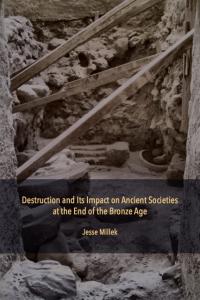Destruction and Its Impact on Ancient Societies at the End of the Bronze Age
Synopsis
This volume offers a groundbreaking reassessment of the destructions that allegedly occurred at sites across the eastern Mediterranean at the end of the Late Bronze Age, and challenges the numerous grand theories that have been put forward to account for them. The author demonstrates that earthquakes, warfare, and destruction all played a much smaller role in this period than the literature of the past several decades has claimed, and makes the case that the end of the Late Bronze Age was a far less dramatic and more protracted process than is generally believed.
Reviews:
Destruction and Its Impact throws up an important point for the study of any collapse, which is the necessity of first identifying and describing what we are seeking to explain; this in itself is not straightforward.… By going back to original reports and tracing citation chains back from claimed destructions, the book clearly shows that the dominant narrative of "the collapse c. 1200 BC" is at least in part a modern myth and an artefact of scholarship. This view must be addressed by those who propose sweeping explanations of collapse.—Guy D. Middleton in Antiquity 98.397 (2024): 261 https://doi.org/10.15184/aqy.2023.187
Chapters
-
Sampler: Chapter 8: Destruction and 1200 BCE: Overview and Impact on Mediterranean Societies
-
Front Matter
-
Destruction and the End of the Bronze Age
-
The Archaeology of Destruction: Denoting, Describing, and Classifying
-
The Destruction That Wasn’t
-
Destruction in Mycenean Greece and the Wider Aegean World
-
Destruction in Anatolia and the Fall of the Hittite Empire
-
Cyprus and the Absence of Destruction at the End of the Late Bronze Age
-
The LevantA Mixed Bag of Destruction
-
Destruction and 1200 BCEOverview and Impact on Mediterranean Societies
-
Appendix: Overview of Destruction ca. 1200 BCE
-
References Cited (included w/each chapter)
-
Index


